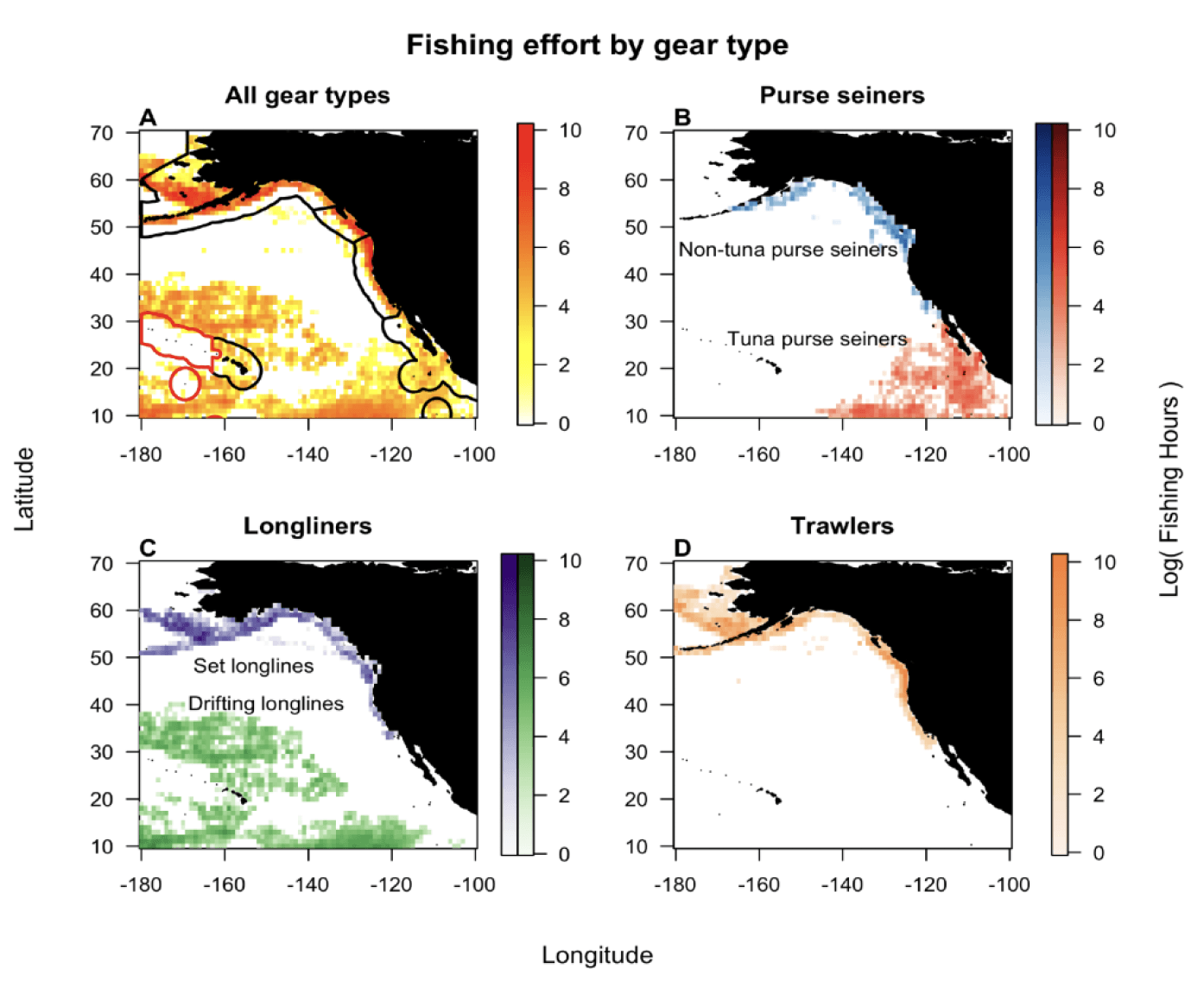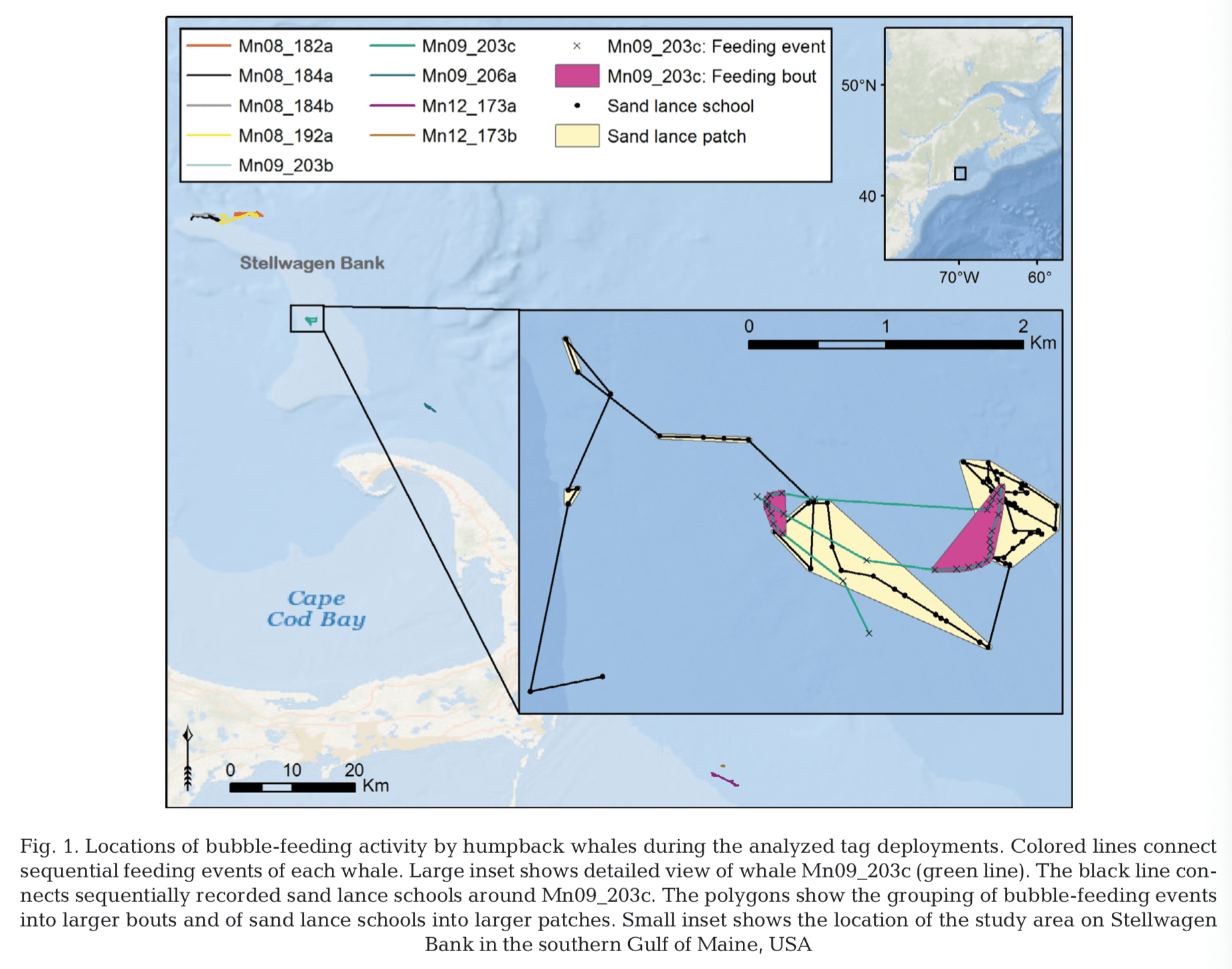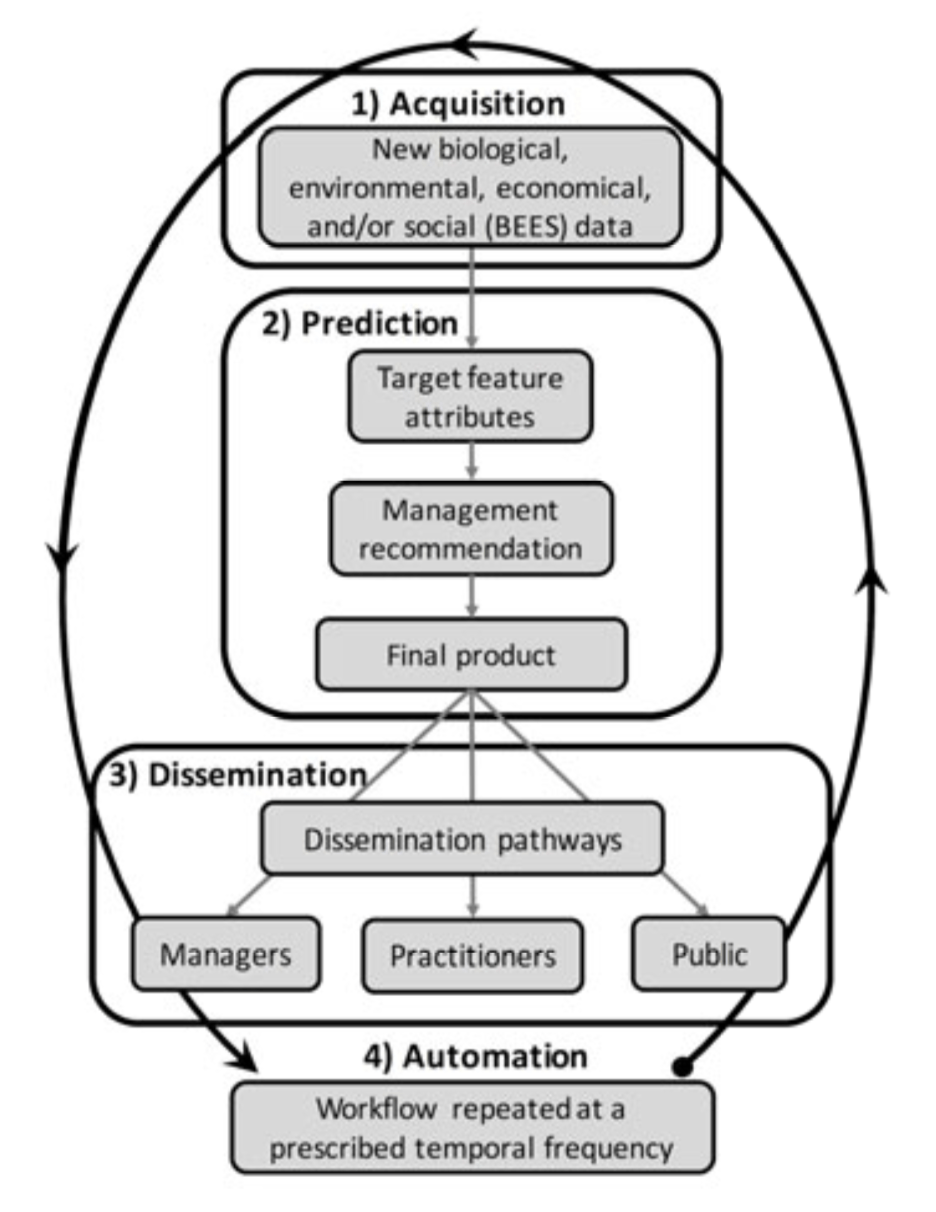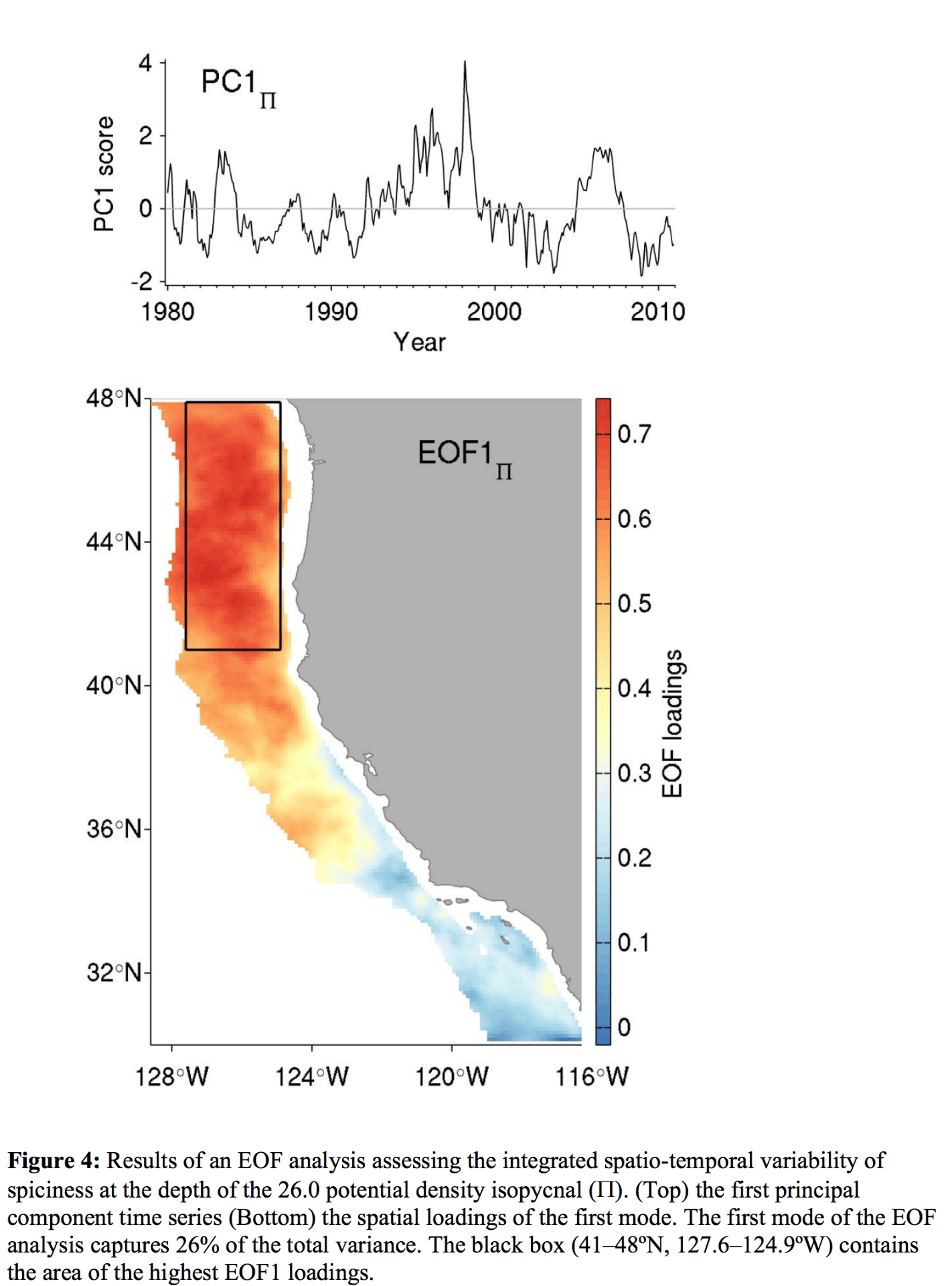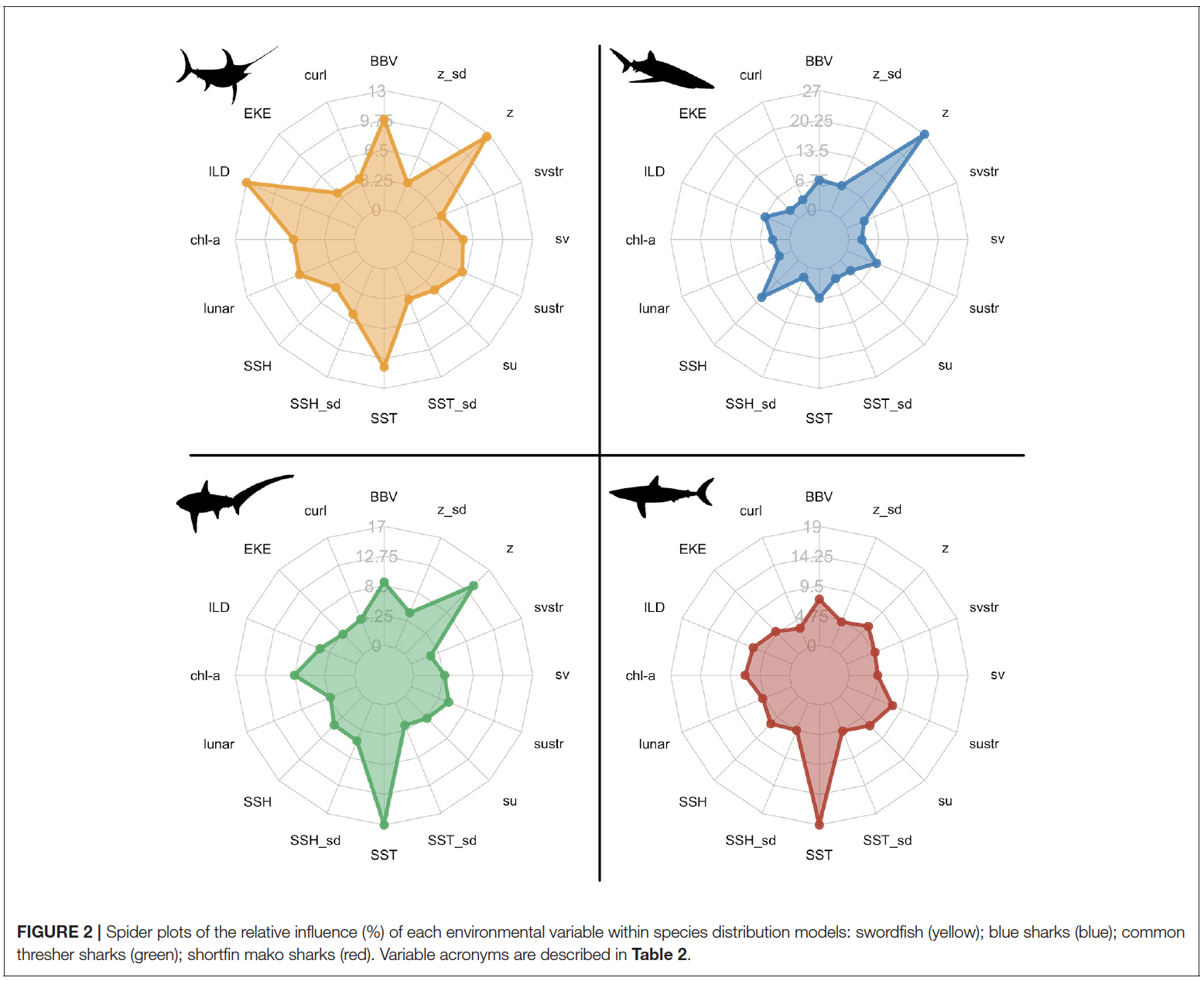By combining species distribution models from Hazen et al. 2013 with Global Fishing Watch data from Kroodsma et al. 2018, White et al. assesses overlap between tunas and sharks and Pacific fishing vessels. In addition, the manuscript assesses which species occur within North American Exclusive Economic Zones versus the open ocean requiring different approaches towards management.
There has been a good discussion on how scale effects overlap calculations for GFW data as well by Amaroso et al. and in the Kroodsma et al. response finding that “fished area” could be between 4% and 55% depending on the scale of calculation. Both articles provide a valid rationale for why their scale was chosen. The work here was conducted on a coarse spatial scale, so it is highly likely that overlap would decrease if finer resolution data were available, yet this scale is appropriate for the ecosystem footprint of much of the gear and the top predator models as well.
Many species of sharks and tunas are threatened by overexploitation, yet the degree of overlap between industrial fisheries and pelagic fishes remains poorly understood. Using satellite tracks from 1,007 industrial fishing vessels in conjunction with predictive habitat models built using 2,406 electronic tags deployed on seven pelagic shark and tuna species, we developed fishing effort maps by gear type across the Northeast Pacific Ocean and assessed overlap with core habitats of pelagic fishes. We found that up to 35% of species’ core habitats overlapped with industrial fishing effort and identified overlap hotspots along the North American continental shelf, the equatorial Pacific, and Mexico’s Exclusive Economic Zone. Our results indicate which species require international, high seas conservation efforts for effective management (e.g., 90% of blue shark overlap and 48% of albacore tuna overlap occurs in international waters) and which may be effectively managed by single nations (e.g., 75% of salmon shark overlap occurs in U.S. waters). Vessels flagged to just 5 nations (Mexico, China, Taiwan, Japan, and the U.S.) account for the vast majority (> 95%) of overlap with core habitats of our focal sharks and tunas on the high seas. These results may inform ongoing, global negotiations over national fishing rights and conservation priorities to achieve sustainability on the high seas.
T.D. White, F. Ferretti, D.A. Kroodsma, E.L. Hazen, A.B. Carlisle, K.L. Scales, S.J. Bograd, B.A. Block, 2018. Predicted hotspots of overlap between highly migratory fishes and industrial fishing fleets in the Northeast Pacific. Science Advances. PDF

